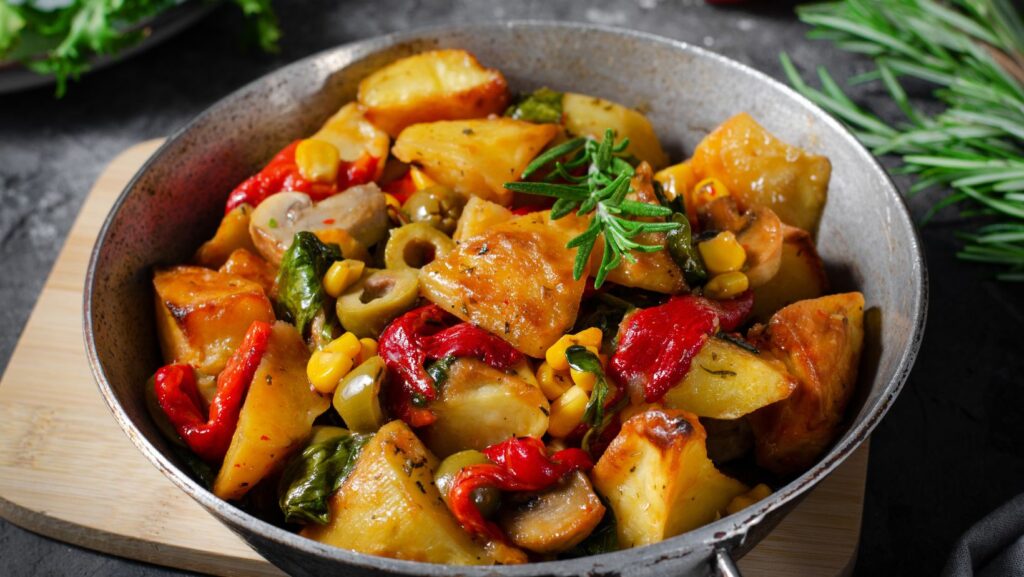Dinner Ideas Indian Vegetarian

Spice up your dinner routine with the vibrant flavors of Indian vegetarian cuisine. It’s not just about lentils and rice; it’s a culinary journey that’s rich, diverse, and incredibly satisfying. From hearty dals to fragrant biryanis, Indian vegetarian dishes offer a feast for the senses that’s both nutritious and delicious.
Whether you’re a seasoned vegetarian looking for new ideas, or you’re just beginning to explore the world of plant-based eating, Indian cuisine has something to offer. Let’s dive into a world where spices reign supreme, and vegetables take center stage in a symphony of flavors that’ll leave you craving for more.
Exploring Dinner Ideas: Indian Vegetarian Cuisine
Dive into an exciting world of Indian vegetarian cuisine. Discover something new, experiment with spices, and unveil an assortment of dinner inspirations, wrapped in traditions and regional intricacies of the subcontinent’s gastronomic culture.
Popular Indian Vegetarian Dishes
Indian vegetarian dishes go far beyond lentils and rice. These dinner ideas are both nutritious and delicious, integrating an array of vegetables, grains, dairy products, and spices.
- Palak Paneer: Indian cheese simmered in a creamy spinach sauce.
- Chole Bhature: Chickpea curry served with fried bread.
- Vegetable Biryani: A rich one-pot dish of basmati rice cooked with aromatic spices and assorted vegetables.
- Masala Dosa: Fermented crepes filled with spiced potatoes.
- Navaratna Kurma: Mixed vegetable curry in a luscious, creamy sauce.
Regional Variations in Indian Vegetarian Cooking

Regional variations in Indian vegetarian cooking magnify the country’s culinary diversity. Just as the landscape changes from North to South or East to West, so does the cuisine.
- North India: Predominantly wheat-based dishes such as Naan bread and roti served with curries like ‘Dal Makhani’ or ‘Paneer Butter Masala’.
- South India: Renowned for rice-based dishes like ‘Idli’, ‘Dosa’ and ‘Lemon Rice’, accompanied by ‘Sambar’ or ‘Rasam’.
- East India: Known for delicate flavors and tendency towards sweet sauces using tomatoes or ‘Panch Phoron’, a mix of five spices.
- West India: Variety of ‘Ghatis’ and ‘Thalis’ with a healthy use of coconut and peanuts. Gujarat dishes are famous for being sweet and spicy.
Remember, don’t limit yourself. Turn these traditional dishes into a personal culinary adventure, adding or substituting ingredients for a tailor-made vegetarian Indian dinner afternoon. Every recipe can be straight from a tried-and-true Indian kitchen, or a fusion created right in your kitchen. This isn’t just food, it’s a cultural experience.
Key Ingredients in Indian Vegetarian Meals
The character of Indian vegetarian meals emerges from their unique combination of ingredients. From the bountiful produce to the myriad of aromatic spices, the Indian vegetarian kitchen carries an array of elements that add dimension to each dish.
Spices That Make the Difference
Spices serve as the life force in Indian vegetarian meals. Their role extends beyond providing an aromatic essence, to influencing the color, taste, and nutritional value of the dish. Turmeric, for instance, confers a vibrant yellow hue and has anti-inflammatory properties. Cumin, fenugreek, and coriander add depth to the flavor profile and have digestive benefits. Sourcing high-quality spies contributes significantly to the authenticity of Indian dishes. The calibre of spices, their freshness and the way they’re utilized, can all greatly affect the outcome of an Indian meal.
Essential Vegetables and Legumes

Vegetables and legumes are indispensable in Indian vegetarian cuisine. They feature in virtually every dish, be it a flavorful curry, a steamed dumpling, or a savory pancake. Vegetables like eggplant, spinach, cauliflower, and tomatoes are staples in various regional recipes. Legumes such as lentils, chickpeas, and kidney beans provide protein content, making the meals nutritious and wholesome. Carefully chosen, these vegetables and legumes can elevate an Indian meal’s flavor, texture and nutritional balance. A variety of these are used to create an array of dishes—each with its own unique appeal—rendering Indian vegetarian cuisine versatile and vibrant.
Venturing into the realm of Indian vegetarian cuisine isn’t just about exploring new flavors. It’s also a step towards a healthier, more sustainable lifestyle. The unique blend of spices, lentils, and veggies doesn’t only tantalize the taste buds but also packs a nutritional punch. It’s clear that adopting an Indian vegetarian diet can be a game-changer, offering a bounty of health benefits from weight management to chronic disease prevention.

